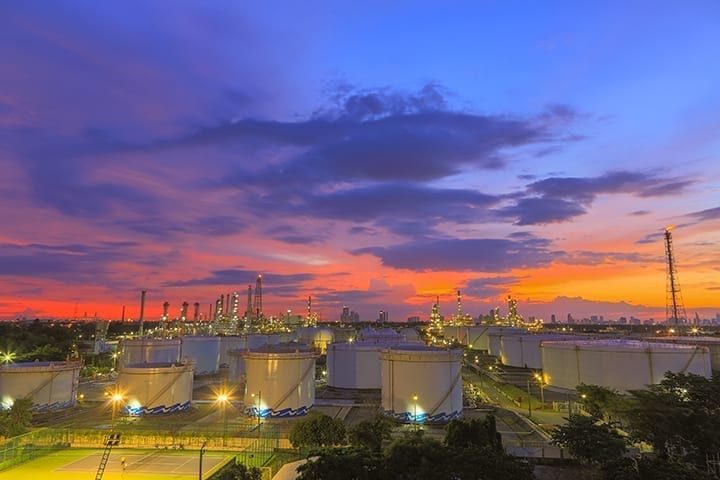Shift to Specialty Fuels—A Driving Force to Build Supply Chain Resilience

Geopolitical tension, ongoing energy crisis, supply chain disruption, and destructive climate change effects have been altering energy needs and sourcing requirements. Global companies have been transitioning from traditional fossil fuels to specialty fossil fuels, such as industrial heating oil (IHO) and CO2-as-Energy. In addition to cost savings (25% to 30%), they offer relatively high heat output. Due to this, companies across industries, especially in Europe, actively seek specialty fossil fuel alternatives. Therefore, to build resiliency, it is imperative for procurement heads to leverage the supply market featuring more than 700 companies by tapping different categories of suppliers.
Amid the rising supply chain issues (Europe's ban on Russian gas), energy crisis, and expanding costs, companies are increasingly moving away from traditional fossil fuels to actively scout for alternates. They are on the lookout for best-suited alternatives from the perspectives of application use case, supply economics, and pricing fit. In lieu of this, it is imperative to understand the current market situation for natural gas and its impact on price as the rationale for the transition to alternate fuels.
Ongoing Gas CrisisThe ongoing global energy crisis is one of the worst circular energy shortages experienced over the last five decades. The crisis has emerged across the oil, gas, and electricity markets, particularly impacting Europe and China, among others.
The Russia-Ukraine war has been fueling the gas crisis, with the European sanctions against Russia leading to a crucial supply deficit in the market. The struggle to secure global supplies is becoming more intense, as countries compete to secure scarce cargo of liquefied natural gas (LNG) ahead of winter in the Northern Hemisphere. In Europe, gas prices surged more than sevenfold since 2021, crossing $50/MMBtu in July 2022. With no relief in prices expected in the middle term, companies have been evaluating alternative fuels in the market.
Alternative Fossil Fuels to the RescueIn the short-to-middle term, companies seek ways to de-risk their procurement process and enhance their dependency on specialty fossil fuels for production. Industrial heating oil (IHO) is one such key alternative.
IHO is another energy source that companies are interested in using in their boilers and other heating machinery. IHO is cost-effective over its counterparts of fossil fuels, considering the current prices for IHO are 25% to 30% lower than those for natural gas. Moreover, IHO provides higher heat output (138,690 Btus per gallon) compared with natural gas (1,030 Btus per cubic foot; 135 cubic feet equals heat content of 1 gallon of oil) at a lesser cost and can be stored and used for years.
From the sourcing standpoint, it is imperative to leverage the multiple sources/categories of suppliers, especially in European markets, such as the refineries wherein crude oil distillate and feedstock are refined and oil products are traded. Furthermore, the industries can also tap wholesalers/distributors (greater than 400 in Europe) and tank storage facility/terminal providers (100 to 150 in Europe).
Undoubted CO2 PotentialWhile carbon dioxide (CO2) is more famous for its adverse environmental impact, it is a valuable commodity that can be put to good industrial usage to reduce greenhouse gas emissions and work toward sustainability/climate control while resolving issues faced by industries in terms of energy requirements. According to a report by the International Energy Agency (IEA), globally, about 230 million tons of CO2 are used every year by industries, with fertilizer makers being the frontrunners, followed by oil and gas companies. Considering the growing potential of CO2, it is imperative to tap multiple sources/categories of suppliers, especially in Europe and Latin America, such as bio LNG plants, carbon capture and utilization (CCU), industrial CO2 bulk cylinder suppliers, industrial CO2 manufacturers, fertilizer manufacturers, as well as the distributors/importers of CO2. These existing suppliers can be leveraged for various needs such as CO2, liquid CO2, and bio/green CO2, while the dedicated carbon capture and storage (CCS) projects/programs can be considered for securing CO2 supplies from a mid- to long-term perspective.
Biofuels-The Long-Term TargetAlthough CO2 and IHO are increasingly considered alternatives by companies to reduce the impact of supply chain disruptions, trade tension, and environmental concerns on functioning, the sustainable solution to these concerns, and a robust and healthy tomorrow, lies in biofuels.
Currently, companies are sourcing biofuels such as bioethanol and biodiesel as clean/sustainable alternatives to traditional fossil fuels such as natural gas, diesel, and kerosene. The use of these biofuels not only leads to reduced maintenance of boilers/other heating equipment due to their clean nature but also exhibits effective long-term solutions characterizing sustainability/decarbonization advantage. The next-generation biofuels such as advanced bioethanol, biomethanol, green diesel, and hydrotreated vegetable oil (HVO) biodiesel are imminent to gain traction in days to come. We will soon see bioenergy stocks trading higher than fossil fuels on the bourses, and the economic well-being of a country being defined based on its bioenergy capacities over petrochemicals.
ConclusionIt is imperative for global procurement leads/category managers to assess supply chain jeopardies, track volatility, and gauge price risks associated with the sourcing of traditional fossil fuels. It is highly critical to actively watch out for supply options available across specialty fossil fuels such as IHO and CO2 to build a resilient supply chain. Therefore, the takeaways are:
- Leverage the European IHO supply market characterizing the presence of greater than 500 companies by tapping various supplier categories such as refinery companies, wholesalers/distributors, and specialty tank storage facility providers.
- Tap the CO2 energy market across Europe and Latin America by exploring the supplier landscape of more than 200 companies and prioritizing different categories such as bio LNG plants, CCUs, bulk cylinder suppliers, industrial manufacturers, fertilizer manufacturers, and CO2
-Laukik Patil is engagement lead for Procurement & Supply Chain Intelligence with Aranca. His expertise lies in the areas of strategy and operational excellence with a special focus on supply chain, procurement, and strategic sourcing.
The post Shift to Specialty Fuels-A Driving Force to Build Supply Chain Resilience appeared first on POWER Magazine.